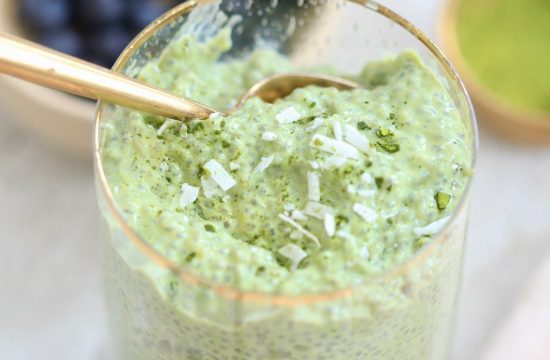Article by Dr Raghuram Y.S. MD (Ay) & Dr Manasa, B.A.M.S
Yakrit is an Ayurveda word used for ‘Liver’ – the organ.
It is an organ formed and derived from the rakta dhatu i.e. blood tissue. So, it is rich in blood. Its story continues with blood because yakrit along with pliha (spleen) are said to be the roots of blood conveying channels in the body i.e. raktavaha sroto mula. So, the qualitative and quantitative health of blood tissue depends on the healthy status of these two organs. In comparison to yakrit, pliha has been given more importance in the Ayurveda treatises.
In the context of eight types of Udara Roga – abdominal diseases marked by enlargement of abdomen, plihodara i.e. enlargement of spleen or splenomegaly has been detailed. Later the acharyas tell that a similar enlargement on the right side of the abdomen is called as Yakrutodara – enlargement of liver or hepatomegaly. The causes and treatment of these conditions are said to be similar.
Apart from being the roots of raktavaha srotas, yakrit and pliha are also –
– Raktashaya – abodes or seats of blood tissue
– Raktadhara kala – the membranes or layers responsible for the formation of blood tissue
The functions or physiology of liver and spleen can be attributed to the combined integral functioning of raktadhara kala which is the ‘blood forming layers’ inside these organs and raktashaya the storage spaces of blood embedded in these organs.
Likewise, the functioning and health of both these organs and raktavaha srotas are also dependent on each other. Also, the functioning of the liver and spleen are also dependent on each other.
Yakrit ‘Kriya Shareera’: Physiology of Liver
Understanding the physiology of the liver by its definition / word derivation
Yakrit is that which does.
The name of the organ ‘Yakrut’ itself defines its action and functions. Samyama – maintenance and Krit / Krut – doing many types of useful functions like formation and distribution of blood and maintenance of health are its main functions.
यं संयमं करोति, कृ तुक् च।शब्दस्तोमनिधि।
The word Yakrit is made up of two terms –
– Ya – means maintaining
– Krit – means doing
That which does and maintains many functions is called Yakrit.
Relation to doshas
यकृत् रञक पित्तस्य स्थानम्।शा.पू.५/३९।
Liver and Spleen are related to Ranjaka Pitta, a subtype of pitta located in these organs. The rasa i.e. the first tissue formed from the digested food essence (ahara rasa) transforms into rakta dhatu (blood or blood cells). This is in sync with the chronology of formation of tissues as explained in Ayurveda.
Mechanism of formation of rakta from rasa – The apya rasa i.e. water rich rasa tissue is supposed to enter the liver and spleen. In these organs the rasa tissues come into contact with ranjaka pitta located therein. This ranjaka pitta colors the rasa tissue red and converts it into blood tissue. This is made possible by the fiery component of ranjaka pitta – the ranjaka agni. Therefore, the blood and its color are formed by Rajnaka Pitta located in the liver and spleen.
Relation to Amashaya
According to Master Vagbhata, Ranjaka Pitta is located in the amashaya i.e. stomach. Clubbing the above said reference with this we can conclude that Ranjaka pitta has 2 components, one part of it is located in the liver and spleen and the other part in the stomach. The function of both these components is ‘rasa ranjana’ i.e. to impart coloration (red color) to the rasa. This also shows that the health of stomach and small intestine, along with liver and spleen and the balance of ranjaka pitta components therein is very much essential for the formation and distribution of blood. Blood is the ‘life component’ and helps in sustenance of life. Thus, Ranjaka Pitta forms a common connection between these 3 organs. This also means that pachaka pitta, samana vata and kledaka kapha located in the amashaya are also indirectly connected with liver and spleen.
We can also see that the disorders of liver and spleen can produce a wide array of disorders related to blood and hematopoiesis which in turn causes imbalance in the quality and quantity of blood. This will affect the overall health of individuals since most activities of the body are dependent on the quantity of blood supply they get and the quality and health of blood tissue. Blood also carries along with it, the vital components of life – nutrition and oxygen – to every cell and corner of the body.
Relation to Dhatus
Rasa tissue comes into the liver and spleen and obtains red color and form of blood. Therefore, rasa and rakta dhatus are related to the liver and spleen. The formation and maturation of blood from rasa tissue is under the control of these organs.
Relation to Mala
In the disease Kamala – jaundice, mainly of the obstructive type, the color of the feces changes to ‘tila pishta nibha’ i.e. color of paste of sesame seeds i.e. there is abnormal change in color of stools. In the treatment of Kamala, it is said that the first step would be to keep giving medicines until the ‘pitta ranjana’ takes place i.e. until the pitta once again imparts the normal color of stools to the stools. The color has changed because the pitta – ranjaka pitta – was not released into the gut from the liver, due to the obstruction. Once the pitta is released into the gut, it once again imparts color to the feces. This is a reference which explains the ‘stool staining’ function of pitta released from the liver. Even in modern medicine we study that the color of the feces / stools is due to the stercobilinogen, a component of bilirubin (part of bile) secreted by the liver.
Relation to Agni
Yakrit is the seat of Ranjaka Pitta. Master Sushruta has used the term Agni for all subtypes of pitta instead of pitta. So, Ranjaka Pitta is basically Ranjaka Agni. Also, the fire is represented in the body in the form of pitta. Agni is basically located in the pitta. So, all functions of agni can be attributed to those of pitta also, including bringing about transformation in the forms of substances. This property of Ranjaka Pitta helps in transformation of apya rasa to agneya rakta, in the process of formation of blood from rasa tissue i.e. lymph.
Other functions of Yakrit and its components
Raktadhara Kala – These are the membranes or layers within the pulp of the yakrit – the liver which are responsible for the formation of blood. These layers are also located in the pliha – the spleen. These are the layers which transform the rasa dhatu into rakta dhatu. Obviously these kalas have active proportions of rakta dhatvagni – the tissue fire of blood tissue and ranjaka pitta, both of which are required for the transformation of rasa into rakta.
Raktashaya – Liver and spleen are considered as the abode of rakta – the blood. The blood formed by the raktadhara kala is held and stored in the depots of these organs until it is supplied to the entire body.
Raktavaha Srotas – The rakta which has been formed by the action of raktadhara kala, ranjaka pitta and rakta dhatvagni on rasa dhatu and stored in the raktashaya, are distributed to the entire body through raktavaha srotas – the channels and ducts which convey the formed and mature blood.















